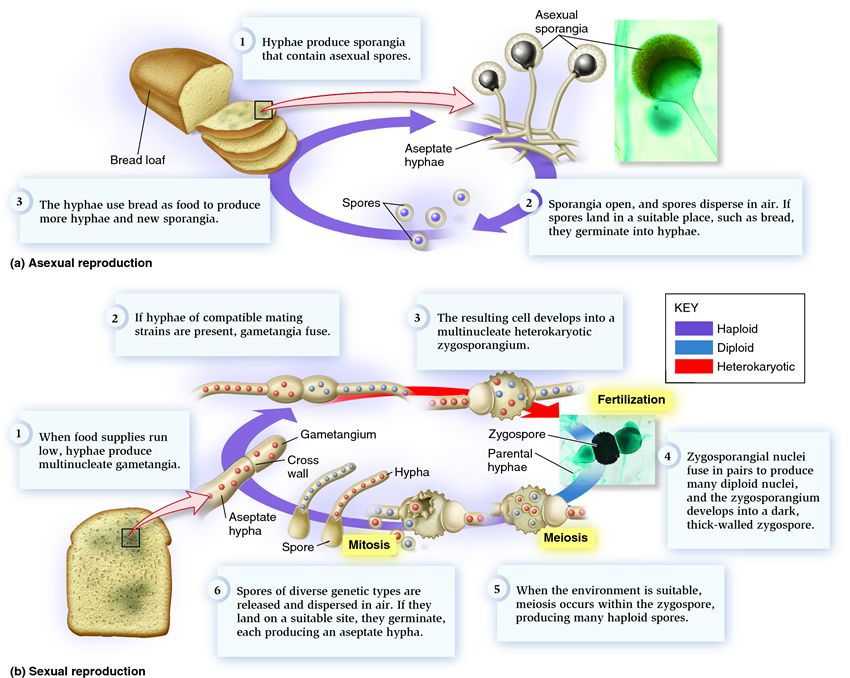 |
| Previous Image | Next Image |
| Description: Zygomycetes are named for the zygospore, a distinctive feature of sexual reproduction. Zygospore production begins with the development of gametangia (“gamete bearersâ€ÂÂ). In the zygomycete fungi, gametangia are hyphal branches whose cytoplasm is isolated from the rest of the mycelium by cross walls. These gametangia enclose gametes that are basically a mass of cytoplasm containing several haploid nuclei. When food supplies run low, and if compatible mating strains are present, the gametangia of compatible mating types fuse, as do the gamete cytoplasms. The resulting cell, known as a zygosporangium, contains many haploid parental nuclei that fuse, producing many diploid nuclei. Eventually, a dark-pigmented, thick-walled spore known as a zygospore matures within the zygosporangium. Each zygospore contains many diploid nuclei and is capable of surviving stressful conditions. When the environment is suitable, the zygospore can undergo meiosis and germinate, dispersing many haploid spores. If the spores land in a suitable place, they germinate to form aseptate hyphae containing many haploid nuclei produced by mitosis. Most zygomycetes are saprobes in soil, living on decaying materials, but some are parasites of plants, animals, and insects. The phylum Zygomycetes is not a monophyletic group and thus is likely to be split as more information becomes available. Picture Stats: Views: 9320 Filesize: 100.29kB Height: 678 Width: 850 Source: https://biology-forums.com/index.php?action=gallery;sa=view;id=808 |
